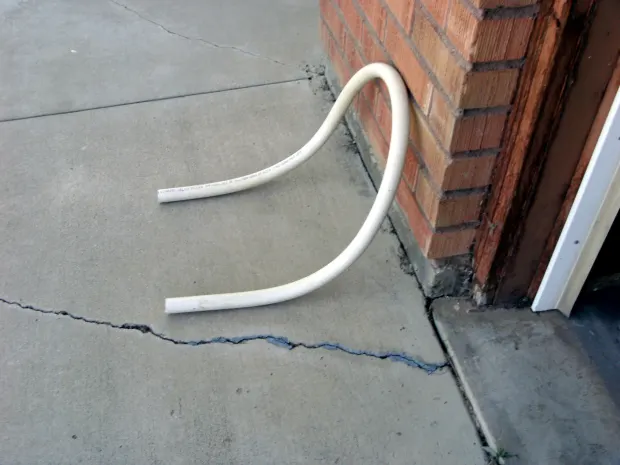Dec . 05, 2024 08:17 Back to list
HDPE to PVC Connection Solutions from Leading Manufacturers in the Industry
Understanding HDPE to PVC Connections Manufacturers and Applications
High-Density Polyethylene (HDPE) and Polyvinyl Chloride (PVC) are two of the most widely used thermoplastic materials in various industries, including construction, plumbing, and telecommunications. Due to their unique properties, HDPE and PVC serve different purposes and applications. However, connecting these two materials presents a challenge that many manufacturers have risen to meet. In this article, we will explore the nature of HDPE to PVC connections, the challenges involved, and the manufacturers that specialize in creating reliable connections between these two materials.
The Properties of HDPE and PVC
HDPE is known for its excellent tensile strength, resistance to impact and chemicals, and low moisture absorption. It is often used in applications ranging from pipelines and water tanks to high-density storage containers. Conversely, PVC is characterized by its rigidity, durability, and versatile applications, often found in piping systems, electrical cable insulation, and construction materials.
Though both materials serve critical roles, they have different coefficients of thermal expansion, chemical compatibilities, and physical properties. This variance can make it challenging to create effective connections between HDPE and PVC.
The Need for Connection
In many projects, there is a necessity to connect HDPE and PVC components. For instance, a construction site may employ PVC piping for drainage while using HDPE for water transportation. Such scenarios require robust solutions that ensure leak-proof and durable connections to maintain the integrity of the overall system.
Challenges in Connecting HDPE to PVC
Connecting HDPE to PVC comes with challenges primarily due to the different properties of the two materials. One significant issue is the difference in how they respond to temperature changes. HDPE can expand or contract more than PVC when subjected to temperature variations, which can lead to connection failure over time if not appropriately managed.
Another challenge is the chemical nature of the two plastics. PVC is known to be more sensitive to certain chemicals than HDPE, which might affect the performance of joints or fittings over time. Manufacturers must consider these factors when designing connection systems to ensure compatibility and long-term durability.
Solutions from Manufacturers
hdpe to pvc connection manufacturer

Given the challenges involved, several manufacturers specialize in creating effective HDPE to PVC connection solutions
. These include1. Mechanical Fittings Manufacturers produce mechanical fittings that can connect HDPE and PVC through compression or clamping mechanisms. These fittings typically consist of a connector designed to match the external diameter of the pipe, allowing for secure attachment without welding or adhesives.
2. Transition Couplings Transition couplings designed specifically for the HDPE to PVC connection are highly sought after. These couplings have an inner design that accommodates the two different materials' expansion rates, ensuring a secure and stable joint.
3. Gasketed Joints Some manufacturers offer gasketed joints that can provide a reliable seal between HDPE and PVC. These joints use rubber or silicone gaskets to absorb thermal movement and prevent leaks.
Leading Manufacturers in the Industry
Several companies have established themselves as leaders in providing HDPE to PVC connection solutions. Their innovations and products have made it easier to manage the challenges of connecting these two materials. Some notable manufacturers include
- Georg Fischer (GF) Known for its high-quality piping systems, GF offers a range of transition fittings for connecting HDPE and PVC.
- IPS Corporation Specializing in plumbing and piping systems, IPS offers a variety of transition couplings and fittings to connect different types of plastic piping.
- Victaulic With a strong presence in industrial and commercial sectors, Victaulic provides advanced piping solutions, including fittings for HDPE to PVC connections.
Conclusion
Connecting HDPE to PVC is a crucial aspect of many modern infrastructure projects, and numerous manufacturers have risen to meet this need. With innovative solutions like mechanical fittings, transition couplings, and gasketed joints, the challenges associated with these connections can be effectively managed. By understanding the properties of both materials and working with experienced manufacturers, engineers and builders can create durable, leak-resistant systems that serve their intended purpose for years to come.
-
High-Quality PVC Borehole Pipes Durable & Versatile Pipe Solutions
NewsJul.08,2025
-
High-Quality PVC Perforated Pipes for Efficient Drainage Leading Manufacturers & Factories
NewsJul.08,2025
-
High-Quality PVC Borehole Pipes Durable Pipe Solutions by Leading Manufacturer
NewsJul.08,2025
-
High-Quality PVC Borehole Pipes Reliable PVC Pipe Manufacturer Solutions
NewsJul.07,2025
-
High-Quality UPVC Drain Pipes Durable HDPE & Drain Pipe Solutions
NewsJul.07,2025
-
High-Quality Conduit Pipes & HDPE Conduit Fittings Manufacturer Reliable Factory Supply
NewsJul.06,2025

